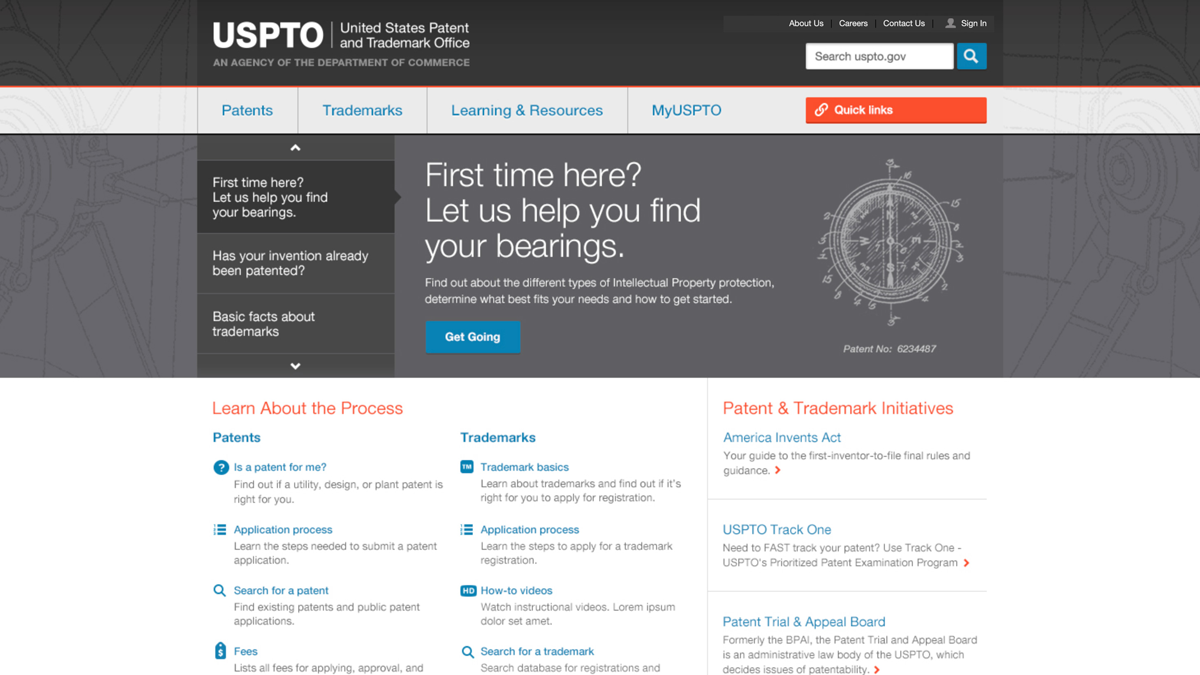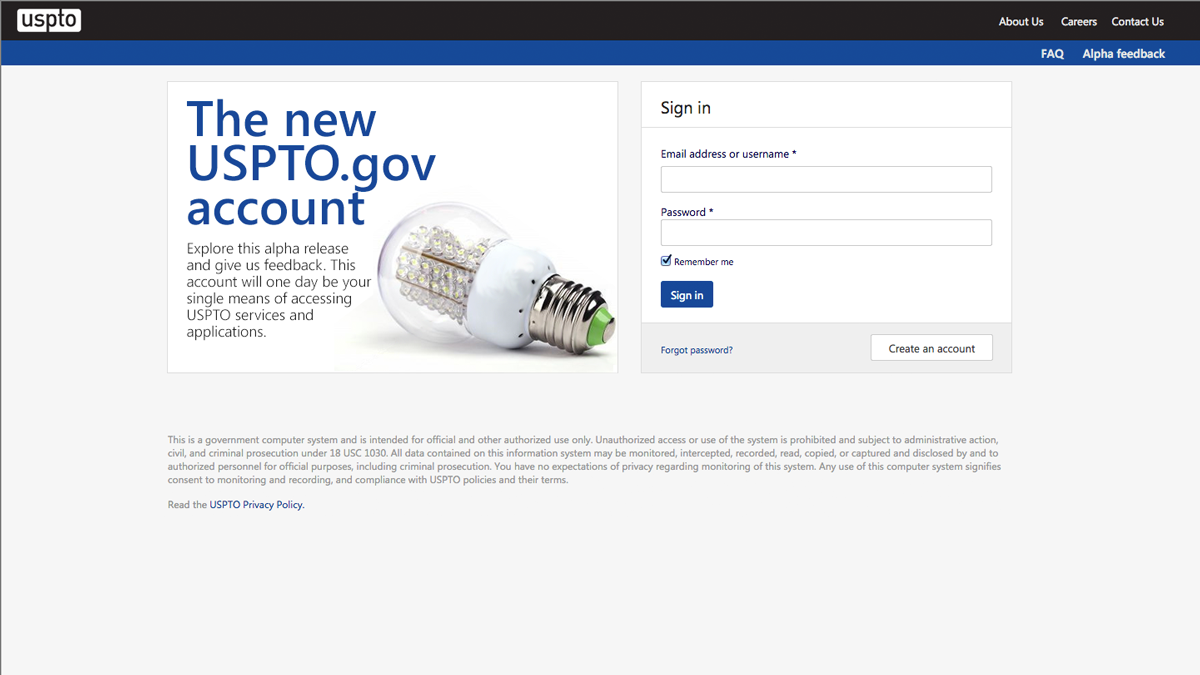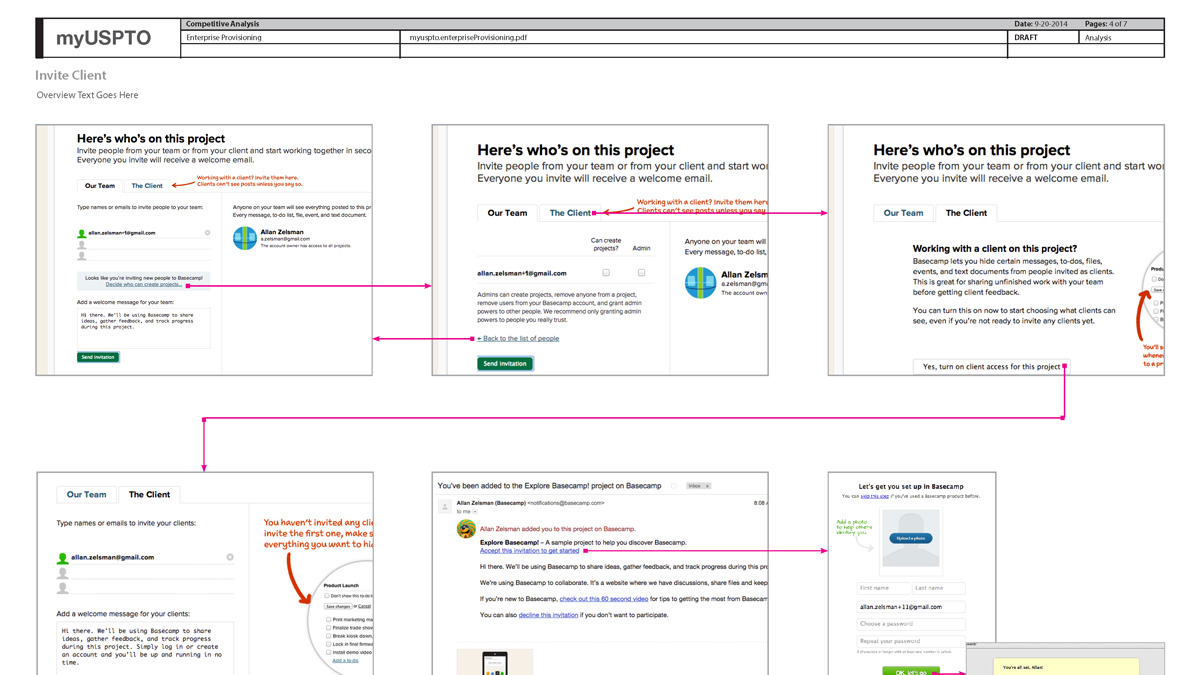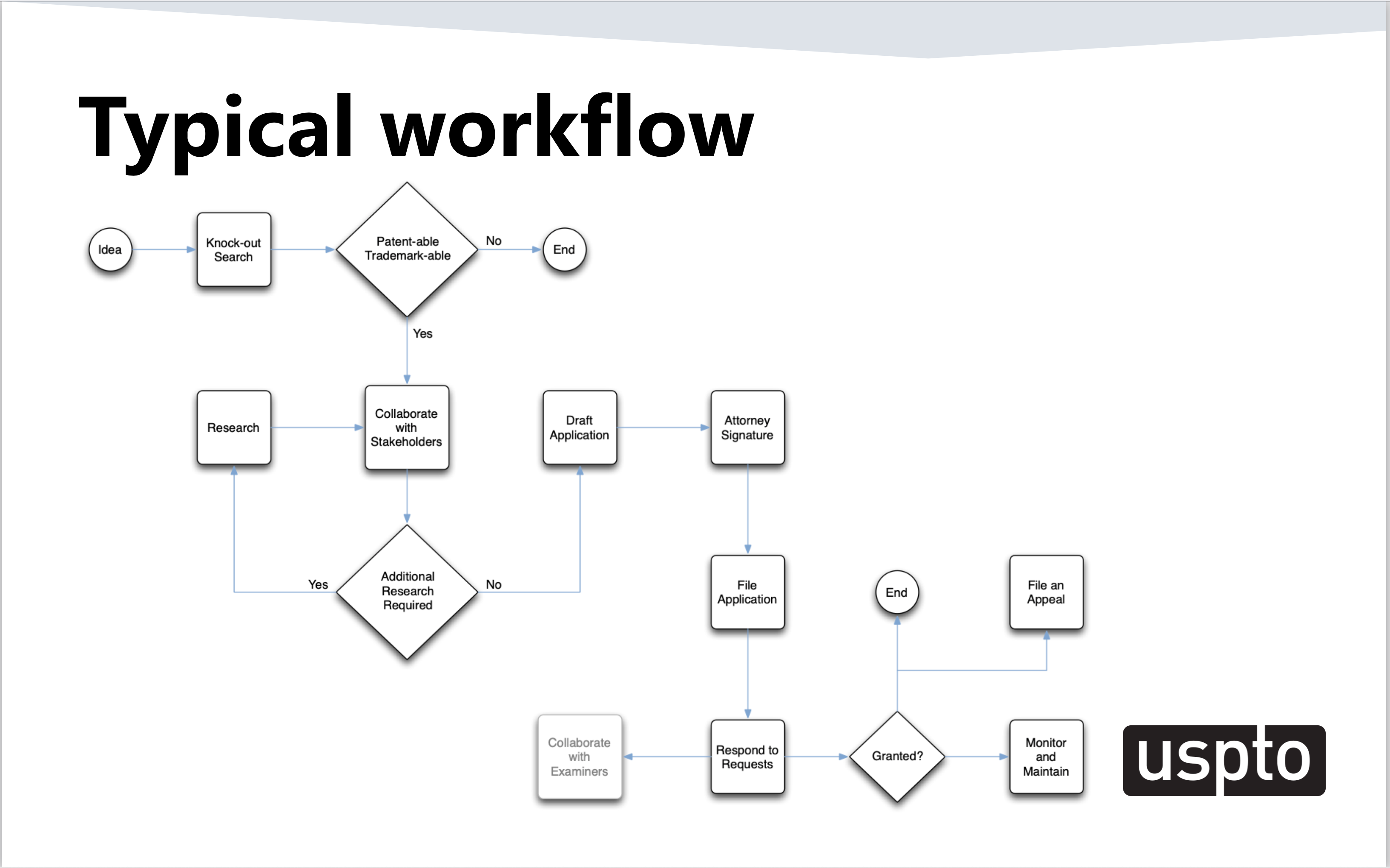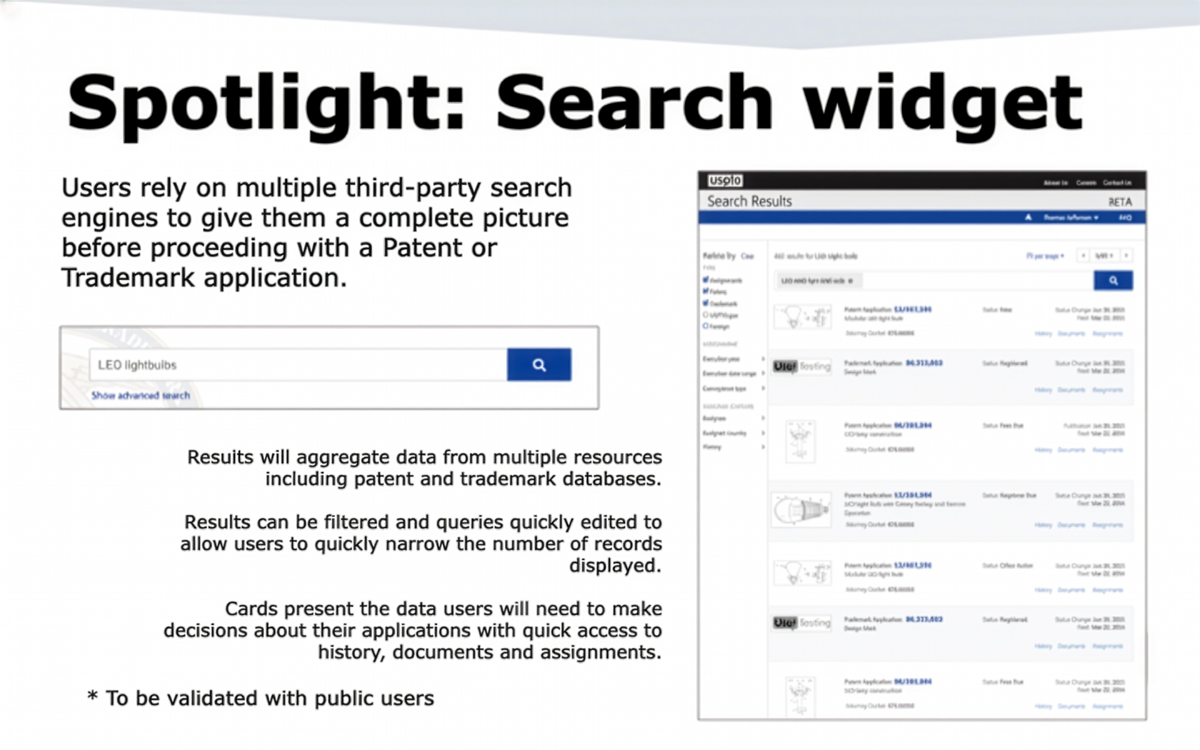
myUSPTO: Secured Unified Access & Personalization
Acting Product Owner, UX — Led vision, backlog, and release readiness for SSO + MFA modernization.
At a Glance
Project Overview
- Client: U.S. Patent & Trademark Office (USPTO)
- Role: Acting Product Owner, UX / Information Architect
- Timeline: Aug 2014 – Sep 2015
- Scope: SSO portal, personalized dashboard, modular widget framework
- Standards: FedRAMP, WCAG 2.0 / Section 508
Tools & Methods
- Axure & Adobe Suite
- User & stakeholder interviews
- Workshops & whiteboarding
- Requirements & data analysis
- Information architecture
- Interaction design & prototyping
Challenge
- Fragmented authentication: Multiple portals with separate sign-ins caused confusion and security risk.
- Disjointed experiences: Users had to re-authenticate to move between tools, leading to frustration and inefficiency.
- Lack of personalization: Each business unit maintained its own dashboards and alerts with no shared framework.
- High support dependency: Account recovery and sign-in errors drove costly support volume.
USPTO needed a single, secure way for users to sign in, manage tasks, and access services—while meeting strict federal accessibility and security standards.
Challenge Examples
Multiple logins, shared passwords, and disconnected systems — a fragmented experience built for protection, not productivity.
Vision & Objectives
- Unify access: Deliver a single, secure sign-on with MFA across all USPTO portals.
- Streamline tasks: Centralize dashboards, alerts, and messages to reduce context switching.
- Personalize experiences: Give each user a tailored view of filings, actions, and deadlines.
- Ensure compliance: Meet Section 508 and FedRAMP requirements for accessibility and security.
- Build for scalability: Establish a modular widget framework for future portal integrations.
Anchored in usability, security, and accessibility—this vision unified three business units into one coherent, user-centered platform.
Vision Examples
Design workshops that aligned product, engineering, and security — redefining access through single sign-on and role-based collaboration.
Approach
- Defined the UX north star and acceptance criteria for each release, aligning product, engineering, and compliance.
- Led research → prioritization → sprint goals with examiners, SMEs, PM, and Engineering to focus on highest-value work.
- Managed roadmap trade-offs (examiner density vs. guided clarity; compliance vs. delivery velocity).
- Ensured release readiness through prototypes, usability validation, and development sign-off.
Product ownership at the UX level turned scattered requests into a cohesive plan for secure SSO and a personalized dashboard—grounded in evidence and built for compliance.
Transformation
- Unified three business units under one secure SSO portal with multi-factor authentication — reducing duplicate logins and support volume.
- Centralized dashboards and widgets into a single modular framework, giving users a personalized, task-focused view of filings, alerts, and deadlines.
- Streamlined collaboration across product, security, and accessibility teams through shared governance and release readiness reviews.
- Standardized UI patterns with accessible components and consistent navigation, ensuring WCAG 2.0 and FedRAMP compliance.
- Established a scalable foundation for future integrations — enabling new portals and features to plug into a unified experience model.
What began as disconnected systems evolved into a secure, user-centered platform — uniting design, compliance, and technology around one consistent access experience.
Transformation Examples
A unified workspace delivered personalized widgets, alerts, and role-based tools — bringing clarity and trust to every login.
Outcomes
Takeaways
- Design systems scale trust. Expanding the widget library deepened adoption and made consistency measurable.
- Governance sustains momentum. Regular security and accessibility audits kept modernization aligned with federal standards.
- Real users reveal reality. Continuous usability validation paired with analytics confirmed measurable improvement in efficiency.
- Frameworks create future value. The modular design architecture became a foundation for other USPTO portals and partner integrations.
Modernization wasn’t just about access — it was about building systems that earn trust, sustain compliance, and evolve with user needs.
